- Home
-
Articles
-
2017
>
- North Korea; A Reflection of a Global Hybrid Conflict
- Turkish Crisis: World War III but nobody knows what side they are on?
- Glaciers or Rising Oceans; Damned if you do, damned if don’t, And maybe both
- Walls, Walls, Walls
- France's Hybrid Civil War
- Predictions of space exploration for the next 500 years
-
2018
>
- NOAA shows a modest 3.2mm sea level rise over the last year. How significant is the current sea level raise from a geological perspective?
- Mexico’s Quasi Hybrid Insurgency and a Reflection on Murder Rate Statistics
- Russia strives for imperial might in the context of the first World Hybrid War
- Paleohydrological events from the late Pleistocene to the early Holocene 30kya to 1500 AD
-
2019
>
- Micro Interglacial Cycles and an alternative understanding to Sea Level Fluctuations from a Paleoclimatic Perspective the Last 140,000 years
- Increasing Summer Insolation of the Northern Hemisphere Trends Towards Reduced Ice Volume; Coupled by a 400,000 year Eccentricity Cycle Extending the Holocene Interglacial
- Why are the Chinese Grumpy: Up to 500 million people died from famine, natural disasters, war, political suppression, ethnic cleansing, pestilence and such the last 2200 years
- China's New Dynasty: Middle Class, Automobile, Science, and Robot Revolution
- Orbital Variations Effects on Interglacial Behavior and Paleohydrological Events during the Quaternary Ice Age: A Compilation of MOTM editorial pieces
- Native American Society and Civilization Collapse Part I; Old World Diseases and Expansion/Collapse of Empires not Unique to European Colonization
-
2020
>
- The History of the “Sieg Heil” Nazi Salute and its shared common origins with the Roman Salute, Bellamy salute, and the swearing in of the Mexico President; And the not so innocent raising of the Fist of Black power
- In the excitement of the 2019-2020 Bush Fires in Australia; people have forgotten about the Legendary Australian Bush Fire of 1974-1975. The Current Bush Fire doesn’t even hold a torch up to it
- Covid 19 Crisis; what does age have to do about it in Italy, forgotten cancer crisis caused by the financial crisis in 2009, and why Africa doesn’t care
- A Quick Look at Nuclear Power in 2020 and Beyond
- India: Rising Economic Star with a Contentious and Troubling Past
-
2017
>
- BulletinNews
- MOTM EM
- Video
- Meetings/Symposium
- Podcasts
- Contributing Organizations
|
Many people are probably wishing Andrés Manuel López Obrador God's Speed for the challenges he inherited as the newly elected president of Mexico. Many people following trends and headlines were probably not surprised to hear the most recent news. But, Mexico passed last years tragic number of homicides. Depending on your source of information, it is estimated that 33,431 murders took place in Mexico in 2018 compared to 28,861 murders in 2017. Just like last years number, the death toll is probably somewhat higher because of missing persons. below is a graph that compares Mexico Murders to US murders. If US had the same murder rate the number of murders in the US would be 80,000 If it was only homicides Andrés Manuel López Obrador may be in a position to quickly solve some of the problems. However, as we pointed out in MOTM BULLETIN NEWS LATIN AMERICA HIGHLIGHTS FROM 2018 Mexico has been plagued by political assassinations, Journalist murders, kidnappings, Gasoline/Diesel production collapse, Gasoline theft, and Gasoline Shortages. Mexico also reached headlines this week when 89 people died from a exploding Gas Line that was being illegally tapped. Also, recently the US government Partial Government is making headlines around the world as it reaches the 31st day. Below we show that the number of arrests and asylum claims on the border have increased from last year. 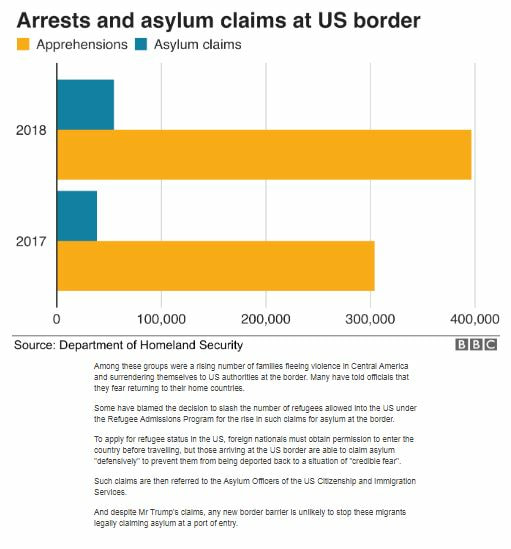 Currently the majority of the current border barriers are mostly meant for stopping Vehicle and are in poor condition. A alternative border plan should at least cover replacement for current border barriers. The graphs below show the amount of Heroin seized on the left, and shows the smuggling routes of various cartels on the right. This graphic below shows the number of prototypes they are looking at for building new barriers and replacing old ones. 
1 Comment
Latin America With an early start to 2019-A dozen Latin American governments and Canada have delivered a blistering rebuke to Venezuelan President Nicolas Maduro, questioning the legitimacy of his soon-to-begin second term and urging him to hand over power as the only path to restoring democracy in his crisis-wracked South American country. In Peru, a bloc of 14 western hemisphere countries known as the Lima Group all but agreed with that assessment. And all but one of its members said they won’t recognize the legitimacy of Maduro’s new presidency. They instead called on Maduro not to take the oath of office next Thursday. The Lima Group members who signed the statement included major Latin American countries like Brazil, Argentina and Colombia, as well as Canada. Spite the fact that only 8% of the world population presides in Latin America and the Caribbean; Mexico's Citizens' Council for Public Security's annual ranking of the world's most violent cities; 50 cities on the list, 42 are in Latin America, including 17 in Brazil, 12 in Mexico, and five in Venezuela. Colombia had three, Honduras had two, and El Salvador, Guatemala, and Jamaica all had one. Just five decades ago, in 1970, Latin America was 92 per cent Catholic. Mexicans, Argentines and Brazilians, for example, were born into the Church and lived out their lives as Catholics, although most of them were not regular churchgoers. However, after a half-century of precipitous decline, Latin America, home to 39 per cent of the world’s 1.3 billion faithful, will no longer be majority Catholic by 2030. A new survey by the respected Chilean polling firm Latino barómetro finds Latin America now to be only 59 per cent Catholic, down from 80 per cent in 1995 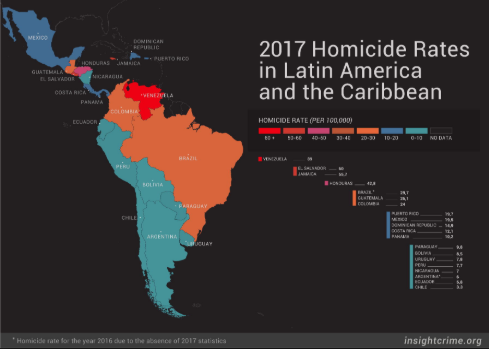 Brazil “Tropical Trump” Jair Bolsonaro, has won Brazil’s runoff election with a 55 per cent majority. He gained media headlines in September when he was stabbed, lost 40% of his blood, and after recovering went on to win the election. His win is a voter rejection of the leftist administrations that have governed Brazil for most of the last 15 years. Latin America's largest economy has been stuck in recession since 2014. The political establishment has been rocked by a high-level corruption scandal, and crime and murder rates have spiked. Jair Bolsonaro is now the President of a country of 200 million people the size of the USA with a $2.0 trillion dollar economy (8th largest economy in the world). But Bolsonaro’s meteoric rise to power is also explained thanks to the support of Brazilian Evangelicals, who make up, according to some surveys, 26 to 27% of Brazilians, a figure that has shot up in the past two decades. Brazil soon will no longer hold the position as the country with the largest number of Catholics in the world. For years the numbers of people who have declared themselves Roman Catholic are in grave decline, and the last survey by Datafolha Institute indicates a loss of about 9 million faithful since 2014 to 2017. Columbia Colombia thus becomes NATO’s first global partner in Latin America. Those in other regions include Afghanistan, Iraq, Pakistan, New Zealand, Japan, Mongolia, and South Korea. But planning for Colombia’s association with NATO apparently preceded that for the seven other nations. As a global partner, Colombia isn’t bound by Article 5 of NATO’s founding treaty of 1949 which declares that an attack on one member state is an attack on all of them, something applying to the 29 fully-fledged members.The job description of a global partner, according to the NATO website, is to “develop cooperation with NATO in areas of mutual interest, including emerging security challenges, and some [partners] contribute actively to NATO operations either militarily or in some other way.” Thus an “intimate bond between the country and the structure of NATO” involves “close collaboration in most military areas.”Colombia boasts two qualifications for associating with NATO. One, it’s a regional military power. Representative numbers tell that story: Colombia’s military force includes 550,550 troops (369,100 active duty), 273 helicopters, 1,345 armed fighting vehicles, and $8.976 billion in budgeted military spending for 2017. Only Brazil, at $25.75 billion, exceeds Colombia in this regard in Latin America. The Colombian government spends 13.1 percent of its total outlay on military spending, which accounts for 3.4 percent of Colombia’s GDP, the highest such rate in South America, says a source citing a percentage of 3.1. Columbia also gained a spot light as Venezuela Opposition leader Julio Borges said “There’s no democratic way out of this crisis,” said Julio Borges, an opposition politician now living in Colombia. “The army have a new enemy and it is Nicolás Maduro – they know he is taking the country down the worst path.” The secretary-general of the Organization of American States (OAS), Luis Almagro, said that a "military intervention" to "overthrow" Nicolas Maduro's government cannot be ruled out. Almagro made the remark while visiting the Colombian city of Cucuta, a border city that has borne the brunt of the Venezuelan refugee crisis. "With regards to a military intervention aimed at overthrowing the regime of Nicolas Maduro, I think we should not exclude any option," the chief of the Washington-based OAS said, adding that Caracas was committing "crimes against humanity" on its people. The general focus on because Venezuela has been devastated by a deep economic crisis, which the US says has triggered the departure of 2.3 million people since 2014. According to Colombia's government, almost a million of those Venezuelans are currently living in the country. Cuba In August 2017, reports surfaced that American and Canadian diplomatic personnel in Cuba had suffered a variety of health problems, dating back to late 2016, and accusations were made that these were a result of an attack by someone using unspecified technology, possibly sonic in nature. The media has taken to calling these reported incidents "Havana Syndrome". In August 2017, reports began surfacing that American and Canadian diplomatic personnel in Cuba had experienced unusual, unexplained health problems dating back to late 2016. The number claiming symptoms was 26 as of June 2018. The health problems typically had a sudden onset: the victim would suddenly begin hearing strange grating noises that they perceived as coming from a specific direction. Some of them experienced it as a pressure or a vibration; or as a sensation comparable to driving a car with the window partly rolled down. The duration of these attacks ranged from 20 seconds to 30 minutes, and always happened while the diplomats were either at home or in hotel rooms. Mexico Mexico’s government has called on the military to fight the growing problem of gasoline theft at national oil company Petróleos Mexicanos (Pemex) by organized criminals, president Andrés Manuel López Obrador announced Thursday. Gasoline theft is driven by Mexico’s drug cartels were moving into the gasoline industry — infiltrating the national oil company, selling stolen fuel on the black market and engaging in open war with the military. The scourge of “huachicoleo,” a colloquial term for fuel theft, caused a loss of approximately 60 billion pesos ($3.05 billion) for Pemex last year, López Obrador said at his morning press conference, a figure he said will likely be surpassed this year. “What’s been stolen this year could finance 40% of a refinery,” said López Obrador, whose government plans to build a refinery in Tabasco state at an estimated cost of $8 billion. “In other words, three years of fuel theft is equivalent to a new refinery.” At least nine states are now affected by gasoline shortages, a situation which President López Obrador says is the result of the government’s new strategy to combat petroleum theft. Shortages of varying severity have been reported in Michoacán, Querétaro, México state, Guanajuato, Jalisco, Puebla, Nuevo León, Tamaulipas and Hidalgo. While the president and officials initially said they were not ready to provide a number of homicides for December because a new mechanism to count the number was still being worked on, reporters were told there were more than 1,700 homicides in December. According to a November report by ADN Politico, citing official figures it attributed to the Interior Ministry, as of October there were 24,022 homicides in Mexico in the first 10 months of the year, 3,406 more than in the previous year. Over the course of this year 540 people have been killed in Cancun. This year the murder total for Cancun in 2018 has increased by 313 deaths compared to last year's toll of 227, earning it a reputation for violence rather than its non-stop party scene or stunning views. Ciudad Juárez registered 1,247 homicides in 2018 amid a raging cartel turf war, this is almost twice as many as 2017. In the nine months leading up to this weekend's presidential election, 132 politicians have been killed. That's according to Etellekt, a risk analysis and crisis management firm. The group's report, released Tuesday, found that 22 of Mexico's 31 states have seen a political assassination since campaigning began in September. in the southwestern state of Guerrero alone, nearly 200 people decided to give up their candidacies because of the violence. Others in Mexico have come to the same decision because of pressure from organised crime groups. The extent of the violence and intimidation is such that in some municipalities in Guerrero, Oaxaca, Michoacan and Puebla – all states in the south of the country – have decided to dissuade their candidates from running. In addition to the killings, more than 400 other cases of aggression against politicians and political operatives have been reported this season, including assassination attempts, threats, intimidation and kidnappings, according to Etellekt Nicaragua The 2018 Nicaraguan protests began on 18 April 2018 when demonstrators in several cities of Nicaragua began protests against the social security reforms decreed by President Daniel Ortega that increased taxes and decreased benefits. After five days of unrest in which nearly thirty people were killed. It is estimated ongoing protests have led to the 500+ deaths, 2,800+ injuries , and 350+ arrests. Upwards of 60,000 citizens have fled the country. Some are relieved to have escaped persecution. Others wait and organize, looking for the opportunity to return home and continue their anti-government protests. Furthermore, Venezuela Venezuela's economy has collapsed. This is the result of years of socialism, incompetence, and corruption, among other things. An important element that mirrors the economy's collapse is Venezuela's currency, the bolivar. It is not trustworthy. Venezuela's exchange rate regime provides no discipline. It only produces instability, poverty, and the world’s highest inflation rate for 2018. Indeed, Venezuela’s annual inflation rate at the end of 2018 was 80,000%. It was reported in Buisness Insider, Venezuela inflation hit an annual rate of 830,000% this year to October, according to new data released this week to the country's parliament. Various reports suggest inflation rates from 80,000% to 1,000,000%. Venezuelans who have fled the country already surpass the 3 million mark, with over one million in Colombia. Colombian authorities have stated that they expect the amount of Venezuelans in the country to double over the next 12 months. Venezuela appears to be tragically stuck in a perverse modern-day “Malthusian trap”, where lack of access to food is an important determinant of the emigration rate. The current conditions are so bad that even if the government were to put all of its net income from oil—Venezuela’s main and almost only export, which is publicly owned—to feed the poorest of the poor, there would still be a substantial portion of the population whose basic caloric needs wouldn’t be covered.
Europe
The list of EU member states withdrawing support for the United Nations global pact on migration is growing, with so far Hungary, Austria, Bulgaria, Czech Republic, Estonia, Poland, Italy and lastly Slovakia having announced they will not sign the pact. Europe Gears up for contentious EU parliamentary elections in 2019; coming in for a rough landing from a fairly unusual number of political shake ups in 2018. Currently, The centre-left parties of EU countries are on course to win less than 20 per cent of the vote in the upcoming European Parliament elections, a record low for the EU’s social democrats. EU parliament votes to punish Hungary, Called for Sanctions against Italy, and more… Belgium: Rather large Yellow Vest protest spread from France to Belgium. Though not reaching the size and tenacity of the French protest, several thousand people still took to the street. Demonstrations began as public backlash against the UN migration pact in central Brussels. The protests descended into scuffles, with police forced to use tear gas and water cannon to restore order. Protests resulted in Belgian Prime Minister Charles Michel resignation. It comes less than two weeks after his main coalition partner quit in a row over migration, leaving him leading a minority government. The Belgian government had lost its majority in Parliament after its biggest coalition partner, the right-wing Flemish party, left in opposition to the planned signing this month of an international agreement on migration. France: Yellow Vest Protests continued for 7 weeks; resulting in 10 civilian death, 2841+ civilians injured, 1,000+ police officers injured, and 4,000+ arrests. At the peak of the protests 287,710 protesters were in the street and the protest enjoyed 72% approval from public. Protests began after government planned projected new fuel taxes. Macron approval rating dropped to records lows; close to 20%. Several notable cabinet ministers resigned; including Gerard Collomb, Nicolas Hulot, and Laura Flassel. As of November 4th 2018, France's far-Right National Rally is now more popular than Emmanuel Macron's governing party as the country becomes more anti-EU and opposed to immigration, according to a new Ifop poll examining voting intentions for upcoming European Parliament elections show the National Rally (NR) at 21 per cent, with Mr Macron's Republic on the Move (LREM) at 19 per cent. Macron has set himself the challenge of reforming Islam. His initiative coincides with the run-up to campaigns for the European Parliament election, when the president faces his strongest challenge from conservative and hard-right groups urging stronger oversight of Muslim clerics, mosques and schools. A 617-page report delivered to Macron, "The Fabric of Islam," presents a comprehensive plan for reform of Islamic institutions in France following a call from Macron to bring them under the aegis of the state. During a July address to lawmakers at the Palace of Versailles, Macron committed to giving Islam "a framework and rules" by the fall. His goals: discouraging insular Muslim communities and combating extremist strands of the religion. Germany Merkel steps down from chairmanship of the CDU, and confirms she will not run for Chancellor in 2021. Afd , conservative anti-immigration party, gains close to 30% approval ratings; driven by the debate on unrestrained immigration and public backlash from the immigration influx of 2015. Afd won 10% of the seats in the State election of Landtag of Bavaria. This is the first time in history Afd won state seats in Landtag of Bavaria. A significant increase in the Green Party and Afd delivered noticeable drop in seats in Landtag of Bavaria for the CDU and SPD parties. Hans-Georg Maassen domestic intelligence chief was retired from all government offices after reiterating his denial of reports of anti-migrant "hunts" in the country. This happened after the Chemnitz Street protests; though marred in controversy, the protests resulted from uneasy public feelings about mass immigration. Italy Matteo Salvini, Eurosceptic, makes headlines throughout 2018; as Italy refused more immigrants, battled with the EU on budget demands. Deputy Prime Minister Matteo Salvini took office in Italy in June 2018, to lead a populist government that is shaking up established politics in Europe. Sweden The, Nationalist anti-immigration, Sweden Democrats party won 17.5 Percent of the parliamentary elections. Though still a minority, the elected Sweden Democrats has caused a deadlock in forming a new government in Sweden and several attempts have failed. This has increased the probability of another election. Spain More than 50,000 immigrants crossed into Spain from Morocco in 2018. This influx is over twice as many as 2017. Though Europe saw an overall total reduction in migration of immigrants through Greece, Italy, and Spain. The migration has essentially shifted from Greece/Italy to Spain. Currently, Spain is one of the more friendly countries in Europe for immigration; though strain and tensions have developed. The starkest illustration of this came on 2 December, when Andalusia – the nation’s most populous region – elected to its parliament 12 candidates fielded by the anti-Muslim, anti-feminist party Vox. All told, Vox secured 400,000 votes – 10 per cent of the total cast in Andalusia. By way of comparison, it secured just 18,000 votes and no seats in an election held just four years before. Catalonia unrest continues via hunger protests by imprisoned leaders, and protests. Catalonia protests continue following their historical declaration of independence made in October 2017; signed by 72 of the 135 members of the Parliament of Catalonia. Virtually rejected by Spain, the leaders of Catalonia are on trial, exiled, or pushed into obscurity. UK Brexit is still scheduled for March 29th 2019. It has been a contentious year for the UK parliament and EU parliament. As Theresa May hones on a Brexit deal, pundit critics are calling for a second referendum and EU fears a hard no-deal Brexit. The strains have been obvious on May as she faced a no confidence vote from the Tory party and she claims she will not lead the Conservatives into the next general election — scheduled to take place in 2022 — and there is chatter in Westminster that she could step down once Brexit divorce talks finish in March. As the Brexit continues to put heat on the UK political intuitions there have been numerous resignations such as; Brexit Secretary Dominic Raab, Brexit Secretary David Davis, MP Michael Gove, Secretary of State for Environment, Food and Rural Affairs, Work and Pensions Secretary Esther McVey, Northern Ireland minister Shailesh Vara, Junior Brexit Minister Suella Braverman, ransport minister Jo Johnson, acob Rees-Mogg, and Boris Johnson. Ukraine Ukraine made headlines November 25th after the Kerch Strait incident when the Russian Federal Security Service (FSB) coast guard fired upon and captured three Ukrainian Navy vessels attempting to pass from the Black Sea into the Sea of Azov through the Kerch Strait on their way to the port of Mariupol. In 2014, Russia had annexed the nearby Crimean Peninsula, which is dominantly internationally recognized as Ukrainian territory. It later constructed the Crimean Bridge across the strait. Under a 2003 treaty, the strait and the Azov Sea are intended to be the shared territorial waters of both countries, and freely accessible. Though the incident is shocking to many people; a low intensity warfare has been taken place along the border with the Donbass (supported by Russia) and Ukraine since 2014. This conflict has claimed more than 10,000 lives, and hostilities continue spit cease fire agreements. In 2018 it was reported that Ukraine lost at least 134 soldiers in the war-torn Donbas region, with the deadliest months being May (at least 17 casualties), August (18 reported casualties) and October (12 casualties), according to military and media reports. Furthermore, An Officer of the 53rd Separate Mechanized Brigade of the Armed Forces of Ukraine Anatoliy Shtefan has disclosed the number of enemy losses in Donbas throughout the eight months of 2018. "January: 47 KIAs (killed in action), 74 WIAs (wounded in action); February: 66 KIAs, 71 WIAs; March: 42 KIAs, 79 WIAs; April: 117 KIAs, 190 WIAs; May: 110 KIAs, 149 WIAs; June: 86 KIAs, 47 WIAs; July: 31 KIAs, 68 WIAs; August: 68 KIAs, 116 WIAs. In total: 567 KIAs, 894 WIAs," Shtefan wrote on Facebook. It is believed that Russia has several thousand Advisors, Volunteers, and Mercenaries supporting the Donbass military. Satellite photos and claims by President Petro Poroshenko reveal Russia may have deployed "more than 80,000 troops, 1,400 artillery and multiple rocket launch systems, 900 tanks, 2,300 armored combat vehicles, 500 aircraft and 300 helicopters" along their common border. Outside support for belligerents in the conflict is not unique to this region. Ukraine is actively seeking membership of NATO, has joined joint military exercises with NATO advisers, and has received military aid; including Anti-Tank Missiles such as the Javelin. NATO Spite warnings from Russia, NATO continues to pursue strategic relations with Ukraine and Georgia which both seek to join NATO. Georgia actively contributes to NATO-led operations and cooperates with the Allies and other partner countries in many other areas. This year also coincided with one of the largest NATO exercises since the cold war. Trident Juncture 18, abbreviated TRJE18. This NATO-led military exercise was held in Norway in October and November 2018 with an Article 5 collective defense scenario. The exercise will be the largest of its kind in Norway since the 1980s. An estimated 50,000 participants from 31 nations took part, including 10,000 vehicles, 250 aircraft and 65 vessels. This exercise coincided with one of Russia‘s largest military exercises since 1981 during the Cold War. The week-long exercise, known as Vostok-2018 (East-2018) took place in far-eastern Russia, Taking part in the drills were around 300,000 Russian soldiers, 36,000 military vehicles, 80 ships and 1,000 aircraft, helicopters and drones, as well as 3,500 Chinese troops. Calexit is often viewed as a progressive dissatisfaction of the election results of the 2016 Donald Trump’s victory from the Electoral College system. There is a common belief among their movement that Trump lost the popular election and the Electoral College does not represent the population and it has often been compared to the Brexit of America for progressives. Though historically speaking there is very little comparison between Brexit and California. California was once a territory of Spain before becoming a part of Mexico; after the Mexico independence in 1821. Though seeking independence is not a unique idea,
"The early government of the newly independent Mexico was highly unstable, and in a reflection of this, from 1831 onwards, California also experienced a series of armed disputes, both between regional areas, and also revolts against the central Mexican government. During this tumultuous political period Juan Bautista Alvarado was able to secure the governorship from 1836 - 1842. The military action which first brought Alvarado to power had momentarily declared California to be an independent state, and had been aided by American and Britishresidents of California, including Isaac Graham. In 1840, one hundred of those residents who did not have passports were arrested, leading to the Graham affair. One of the largest ranchers in California was John Marsh. After failing to obtain justice against squatters on his land from the Mexican courts, he determined that California should become part of the United States. Marsh conducted a letter-writing campaign espousing the California climate, soil and other reasons to settle there, as well as the best route to follow, which became known as "Marsh's route." His letters were read, reread, passed around, and printed in newspapers throughout the country, and started the first wagon trains rolling to California. He invited immigrants to stay on his ranch until they could get settled, and assisted in their obtaining passports. After ushering in the period of organized emigration to California, Marsh helped end the rule of the last Mexican governor of California, thereby paving the way to California's ultimate acquisition by the United States" Though part of Mexico, California had internal resistance to the Mexico and sought out independence and/ or Statehood of the US "In 1846, a group of American settlers in and around Sonoma rebelled against Mexican rule during the Bear Flag Revolt. Afterwards, rebels raised the Bear Flag (featuring a bear, a star, a red stripe and the words "California Republic") at Sonoma. The Republic's only president was William B. Ide, who played a pivotal role during the Bear Flag Revolt. This revolt by American settlers served as a prelude to the later American military invasion of California, and was closely coordinated with nearby American military commanders. The California Republic was short lived; the same year marked the outbreak of the Mexican–American War (1846–48). When Commodore John D. Sloat of the United States Navy sailed into Monterey Bay and began the military occupation of California by the United States, Northern California capitulated in less than a month to the United States forces. After a series of defensive battles in Southern California, the Treaty of Cahuenga was signed by the Californios on January 13, 1847, securing American control in California." The Rest is history, California because an official state of the USA in 1850. Though California changed territory ownership several times, they enjoyed sovereign statehood of their own only semi-autonomously. While Brexit represents a long history of independent seeking from Britain that goes back to Roman invasions, Vikings, Schism from Catholic Church with the Anglican Church, and etc. Even more, the UK still uses the pound; an independent currency that is not a current option for California. Though Calexit is considered very unpopular with most of the USA, it’s popularity peaked at close to 32% support following the 2016 election. For a state that has 40 million people, that means close 14 million people support it. Furthermore, it could be speculated that close to half of the supporters would be more inclined to vote Democrat. If 70% of the state voted democrat, perhaps close to 50% of the democratic voters favored or entertained the idea of Calexit. This does show a very deepening divide from the common views of California super-majority compared to the rest of the country; including comparing them to people sharing similar political party affiliations and domestic views. The story of Calexit has also been marred in international involvement from countries such as Russia, ""On December 18, 2016, Russia Today, a media outlet controlled by the Kremlin, reported that “a campaign calling for the independence of California from the United States has opened an ‘embassy’ in Moscow. The movement, Yes California, is hoping for a ‘Calexit’ break from the US. Speaking at a press conference on Sunday, Louis Marinelli, leader of the movement, said the embassy will not deal with diplomatic issues, but will act as more of a cultural center that will educate Russians about California's history, boost trade ties and promote tourism.”How does a fledgling secession movement with little grassroots support afford a Moscow “embassy”? Snopes says a group funded by the Kremlin is letting them use the space for free. Over the weekend, Marinelli gave a television interview to MSNBC host Alex Witt. “Do you think people might grow skeptical and concerned that this movement is just part of a bigger strategy by the Kremlin to destabilize the West?” she asked.“Sure, we believe that’s certainly a reasonable skepticism for people to have,” Marinelli said, “but the truth of the matter is that the American government has for a long time tried to rally the American public against Russia no matter what the issue is.”“On paper, the leader of the California secession movement lives in an apartment complex near San Diego’s Golden Hill neighborhood. But in reality, the Calexit campaign is being run by a 30-year-old who lives and works in a city on the edge of Siberia. Louis Marinelli heads the secessionist group Yes California. Following the election of Donald Trump to the presidency, the organization has gone from an unknown fringe group to one discussed seriously in mainstream media.What has not been discussed as prominently is Marinelli’s deep ties to Russia. A former right-wing activist from Buffalo, New York, Marinelli first moved to Russia almost a decade ago. He studied at St. Petersburg State University, the alma mater of Russian President Vladimir Putin. He returned to the United States to campaign against LGBTQ rights as part of the National Organization for Marriage. Marinelli then returned to Russia. He would marry a Russian citizen, and the couple moved to San Diego, where Marinelli launched a political career based on a platform of California secession.“I immigrated to California, and I consider myself to be a Californian,” Marinelli says from his apartment in Yekaterinburg, a city of about 1.4 million just east of the Ural Mountains and about 1,000 miles from Moscow.”" For the time being, it is not likely Calexit will ever make it to the ballot box and will never have the local support that State of Jefferson has. And will merely exist as only a cartoon comic for the near term future… What is the difference between Calexit and State of Jefferson? (Part I: State of Jefferson)1/1/2019 First of all, they are not the same. State of Jefferson 51st state movement does not seek to become a new country. The Calexit movement is a movement all to itself that would like to have California secede from the United States. The State of Jefferson movement trace’s it root back prior to World War II at its’s peak in 1941. Even though State of Jefferson pushes to be the 51st state, in 1941 they were pushing to be the 49th state. Alaska and Hawaii beat them to the 49th and 50th states in 1959. State of Jefferson is a conglomerate of counties in Southern Oregon and Northern California. Since 1941, it has partially lost its sway in Southern Oregon and is still an active movement in Northern California were it often still makes the ballot box and is even favored in some counties. All in all their message is usually very libertarian and geared towards decentralized government which causes it to loss sway with more progressive counties and urban areas. One of their core beliefs is to give federal land back to states, so the movement is similar to other western liberty movements. Realistically, if they became their own state they would be subject to federal over site that many other states have in the West, but they would be free to form their own local regulations and local/state tax codes without California. Within the State of Jefferson movement there is a local identity and feeling that is unique to the people that live there. There feeling carries over to the nostalgia that they already voted on it and it has been decided locally but they get over ruled by the super majority of California. This state concept is not to be confused with the New California concept that was overruled. New California is a conservative concept to divide California in two states that better represented by a liberal and conservative majority. It lacks the tradition and history of State of Jefferson.
|
Proudly powered by Weebly
- Home
-
Articles
-
2017
>
- North Korea; A Reflection of a Global Hybrid Conflict
- Turkish Crisis: World War III but nobody knows what side they are on?
- Glaciers or Rising Oceans; Damned if you do, damned if don’t, And maybe both
- Walls, Walls, Walls
- France's Hybrid Civil War
- Predictions of space exploration for the next 500 years
-
2018
>
- NOAA shows a modest 3.2mm sea level rise over the last year. How significant is the current sea level raise from a geological perspective?
- Mexico’s Quasi Hybrid Insurgency and a Reflection on Murder Rate Statistics
- Russia strives for imperial might in the context of the first World Hybrid War
- Paleohydrological events from the late Pleistocene to the early Holocene 30kya to 1500 AD
-
2019
>
- Micro Interglacial Cycles and an alternative understanding to Sea Level Fluctuations from a Paleoclimatic Perspective the Last 140,000 years
- Increasing Summer Insolation of the Northern Hemisphere Trends Towards Reduced Ice Volume; Coupled by a 400,000 year Eccentricity Cycle Extending the Holocene Interglacial
- Why are the Chinese Grumpy: Up to 500 million people died from famine, natural disasters, war, political suppression, ethnic cleansing, pestilence and such the last 2200 years
- China's New Dynasty: Middle Class, Automobile, Science, and Robot Revolution
- Orbital Variations Effects on Interglacial Behavior and Paleohydrological Events during the Quaternary Ice Age: A Compilation of MOTM editorial pieces
- Native American Society and Civilization Collapse Part I; Old World Diseases and Expansion/Collapse of Empires not Unique to European Colonization
-
2020
>
- The History of the “Sieg Heil” Nazi Salute and its shared common origins with the Roman Salute, Bellamy salute, and the swearing in of the Mexico President; And the not so innocent raising of the Fist of Black power
- In the excitement of the 2019-2020 Bush Fires in Australia; people have forgotten about the Legendary Australian Bush Fire of 1974-1975. The Current Bush Fire doesn’t even hold a torch up to it
- Covid 19 Crisis; what does age have to do about it in Italy, forgotten cancer crisis caused by the financial crisis in 2009, and why Africa doesn’t care
- A Quick Look at Nuclear Power in 2020 and Beyond
- India: Rising Economic Star with a Contentious and Troubling Past
-
2017
>
- BulletinNews
- MOTM EM
- Video
- Meetings/Symposium
- Podcasts
- Contributing Organizations

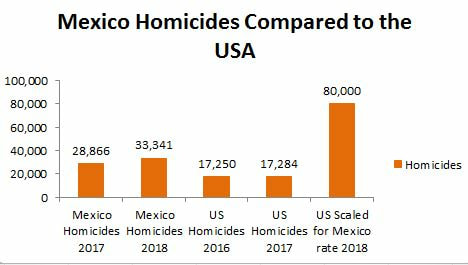
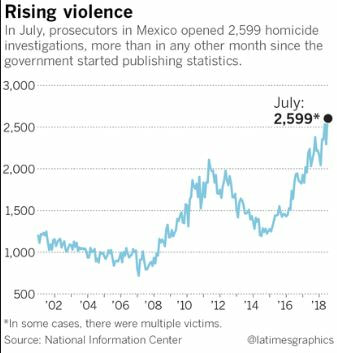
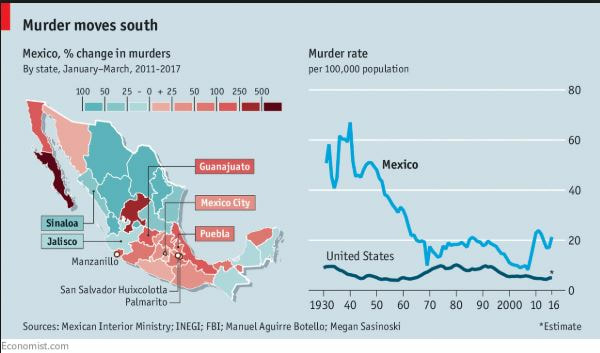
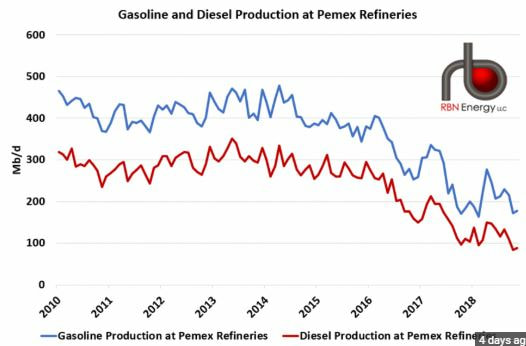
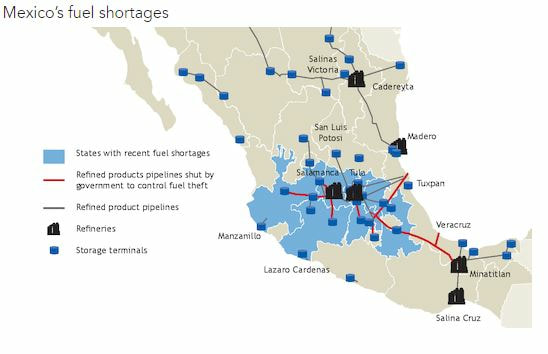
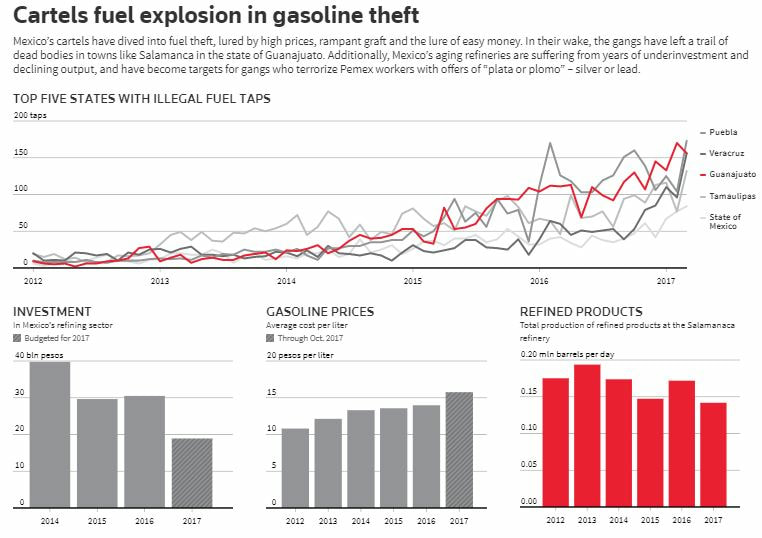
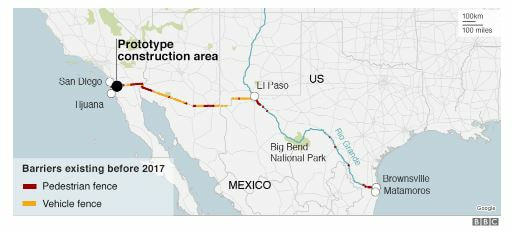
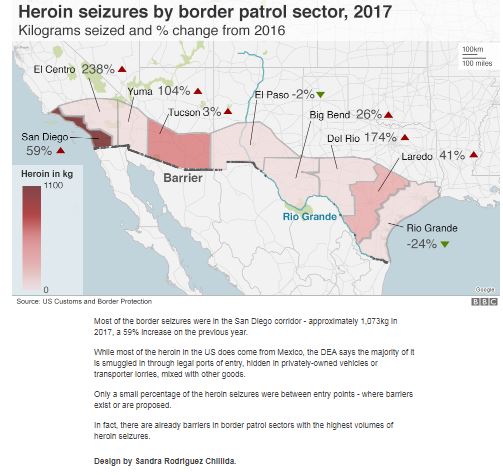
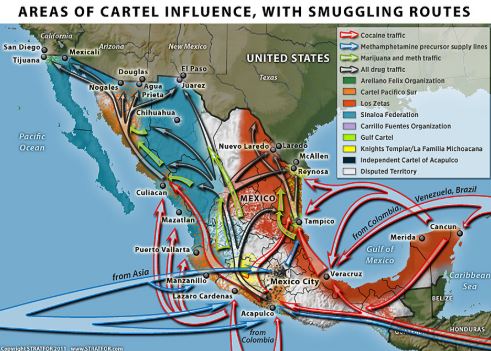
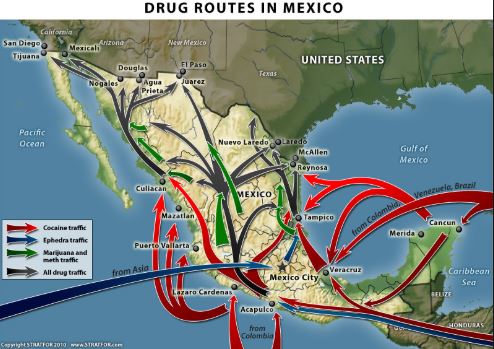
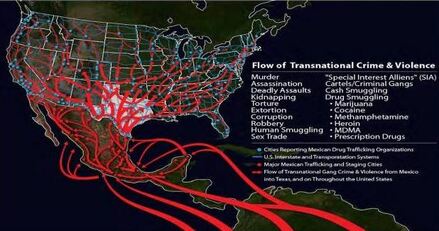
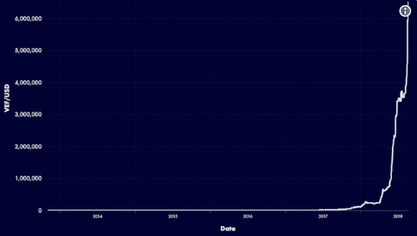

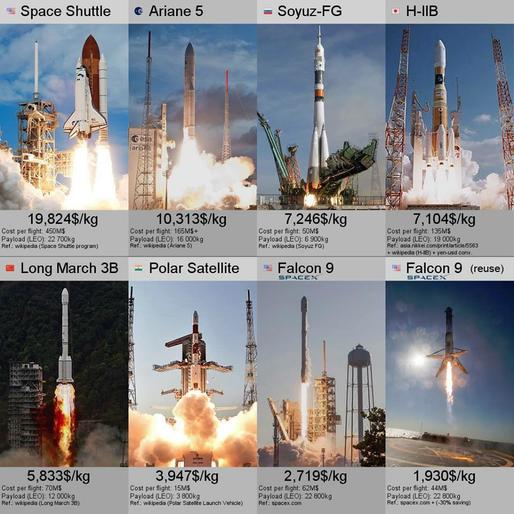
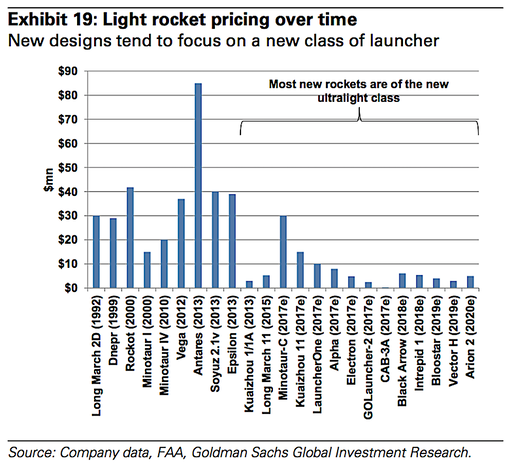
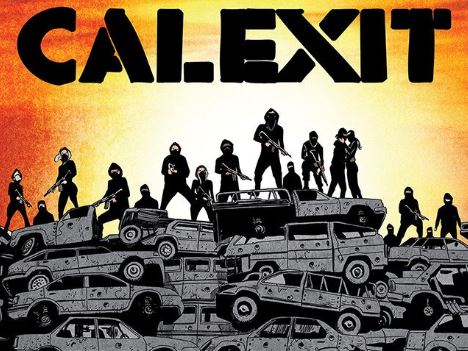
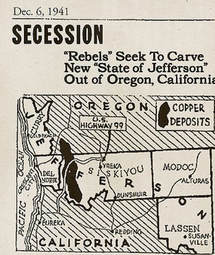

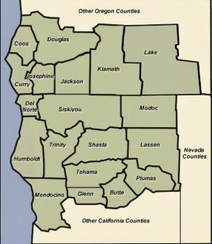
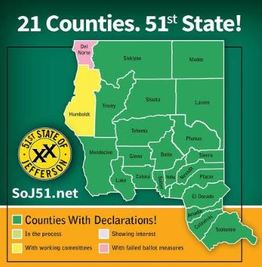
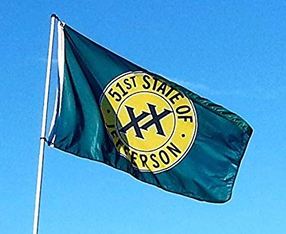
 RSS Feed
RSS Feed